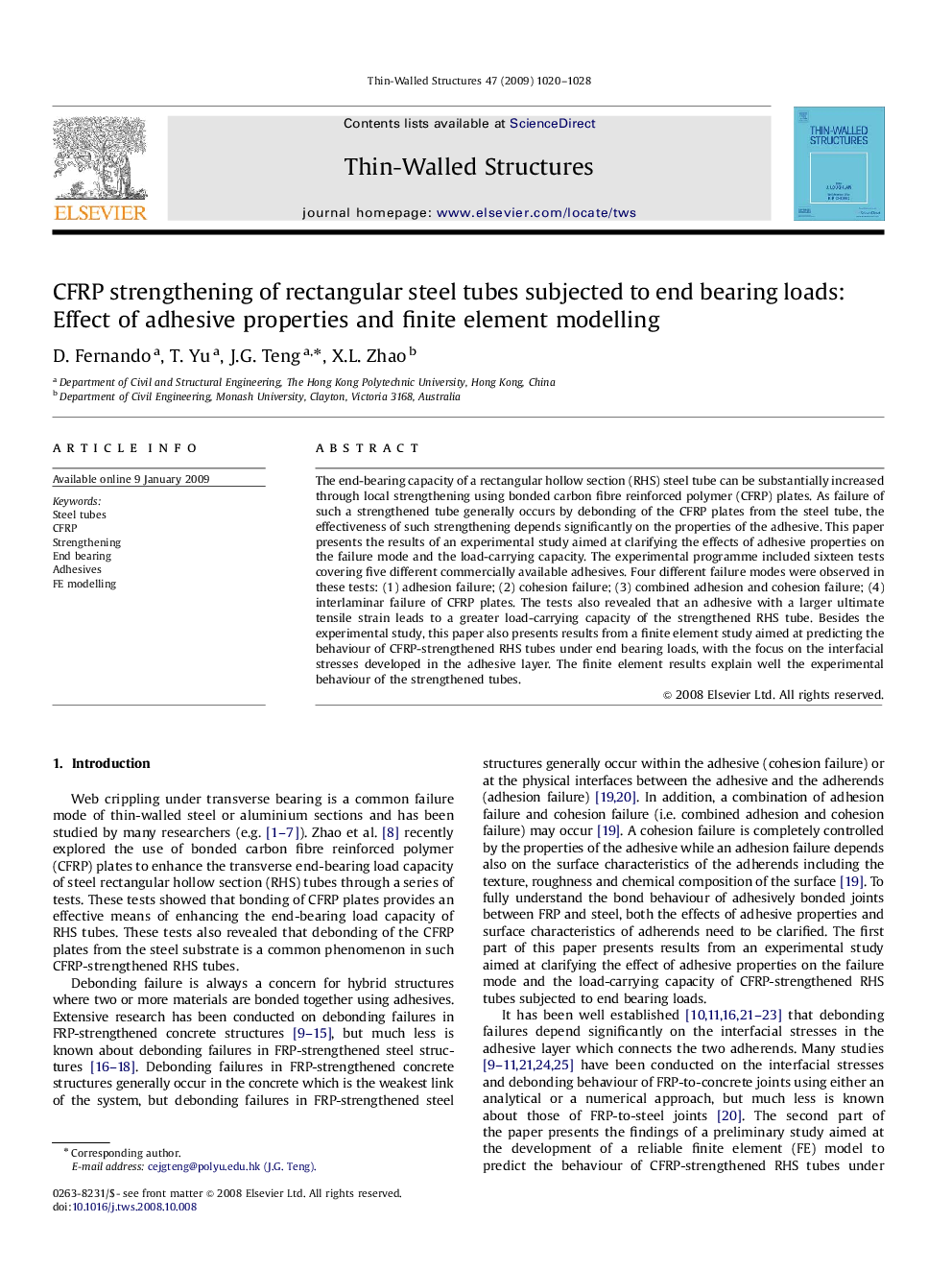| Article ID | Journal | Published Year | Pages | File Type |
|---|---|---|---|---|
| 309924 | Thin-Walled Structures | 2009 | 9 Pages |
The end-bearing capacity of a rectangular hollow section (RHS) steel tube can be substantially increased through local strengthening using bonded carbon fibre reinforced polymer (CFRP) plates. As failure of such a strengthened tube generally occurs by debonding of the CFRP plates from the steel tube, the effectiveness of such strengthening depends significantly on the properties of the adhesive. This paper presents the results of an experimental study aimed at clarifying the effects of adhesive properties on the failure mode and the load-carrying capacity. The experimental programme included sixteen tests covering five different commercially available adhesives. Four different failure modes were observed in these tests: (1) adhesion failure; (2) cohesion failure; (3) combined adhesion and cohesion failure; (4) interlaminar failure of CFRP plates. The tests also revealed that an adhesive with a larger ultimate tensile strain leads to a greater load-carrying capacity of the strengthened RHS tube. Besides the experimental study, this paper also presents results from a finite element study aimed at predicting the behaviour of CFRP-strengthened RHS tubes under end bearing loads, with the focus on the interfacial stresses developed in the adhesive layer. The finite element results explain well the experimental behaviour of the strengthened tubes.
